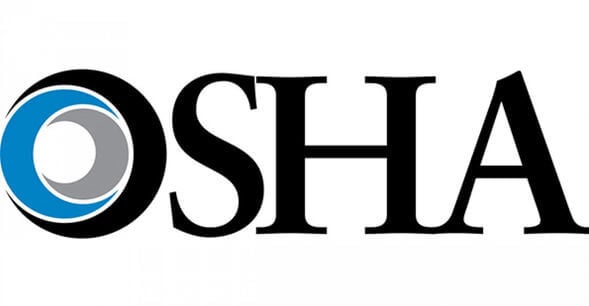OSHA Reporting Requirements: Overview

All employers must report the following work-related incidents to the Occupational Safety and Health Administration (OSHA):
- Fatalities
- Inpatient hospitalizations of one or more employees
- Amputations
- Loss of an eye
Employers must report work-related fatalities within eight hours of learning about the incident. For any in-patient hospitalization, amputation, or eye loss employers must report the incident within 24 hours of learning about it.
Only fatalities occurring within 30 days of the work-related incident must be reported to OSHA.
Further, for an in-patient hospitalization, amputation, or loss of an eye, these incidents must be reported to OSHA only if they occur within 24 hours of the work-related incident.
Employers do not have to report an in-patient hospitalization if it was for diagnostic testing or observation only. An in-patient hospitalization is defined as a formal admission to the in-patient service of a hospital or clinic for care or treatment.
Important: All employers under OSHA jurisdiction must report all work-related fatalities, hospitalizations, amputations, and losses of an eye to OSHA, even employers who are exempt from routinely keeping OSHA injury and illness records due to company size or industry.
How to Report
Employers may report to OSHA by one of the following methods:
- Calling OSHA’s free and confidential number at 1-800-321-OSHA (6742).
- Calling the closest OSHA Area Office during normal business hours.
- Using OSHA’s online form.
Electronic Reporting
On January 25, 2019, the Federal Occupational Safety and Health Administration’s (OSHA) final rule revising electronic recordkeeping regulations was published in the Federal Register. According to the rule, OSHA amended the recordkeeping regulation by rescinding the requirement for establishments with 250 or more employees to electronically submit information from OSHA Forms 300 and 301.
These establishments will continue to maintain those records on-site, and OSHA will continue to obtain them as needed through inspections and enforcement actions. In addition to reporting required after severe injuries, establishments will continue to submit information from their Form 300A.
The recordkeeping regulation amendments also require covered employers to submit their Employer Identification Number (EIN) electronically along with their injury and illness data submission.
Employers must continue to maintain OSHA Forms 300 and 301 for OSHA inspection.
On January 25, 2019, the Federal Occupational Safety and Health Administration’s (OSHA) final rule revising electronic recordkeeping regulations was published in the Federal Register. According to the rule, OSHA amended the recordkeeping regulation by rescinding the requirement for establishments with 250 or more employees to electronically submit information from OSHA Forms 300 and 301.
These establishments will continue to maintain those records on-site, and OSHA will continue to obtain them as needed through inspections and enforcement actions. In addition to reporting required after severe injuries, establishments will continue to submit information from their Form 300A.
The recordkeeping regulation amendments also require covered employers to submit their Employer Identification Number (EIN) electronically along with their injury and illness data submission.
What to Report
Employers reporting a fatality, in-patient hospitalization, amputation, or loss of an eye to OSHA must report the following information:
- Establishment name
- Location of the work-related incident
- Time of the work-related incident
- Type of reportable event
- Number of employees who suffered the event
- Names of the employees who suffered the event
- Contact person and his or her phone number
- Brief description of the work-related incident.
Employers do not have to report an event if it:
- Resulted from a motor vehicle accident on a public street or highway, except in a construction work zone (employers must report the event if it happened in a construction work zone)
- Occurred on a commercial or public transportation system (airplane, subway, bus, ferry, street car, light rail, or train)
- Occurred more than 30 days after the work-related incident in the case of a fatality or more than 24 hours after the work-related incident in the case of an in-patient hospitalization, amputation, or loss of an eye.


